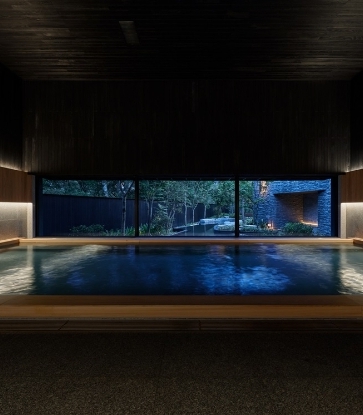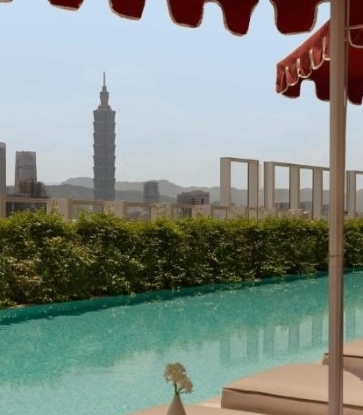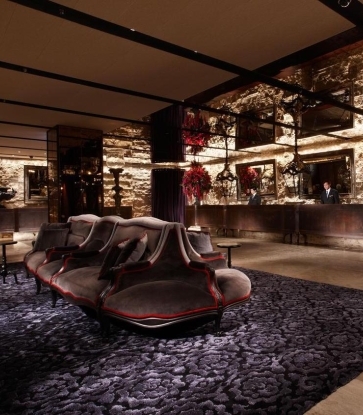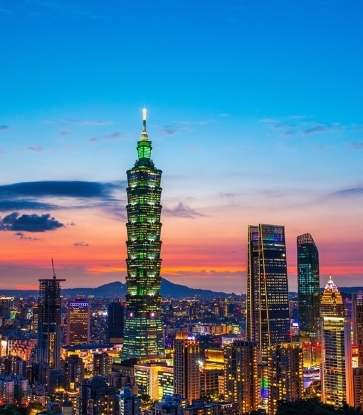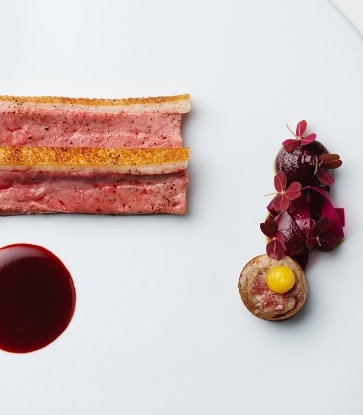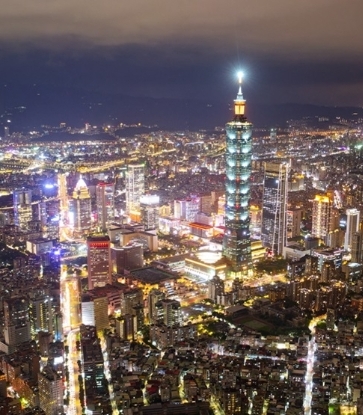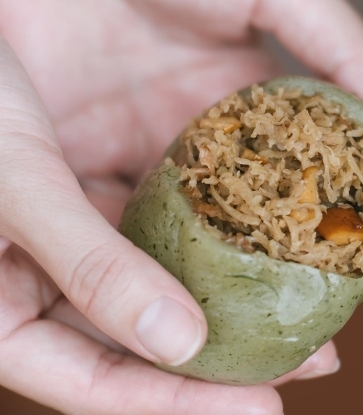Recently, two-MICHELIN-starred restaurant RAW launched its summer menu, shining a new light on household ingredients and traditional dishes.
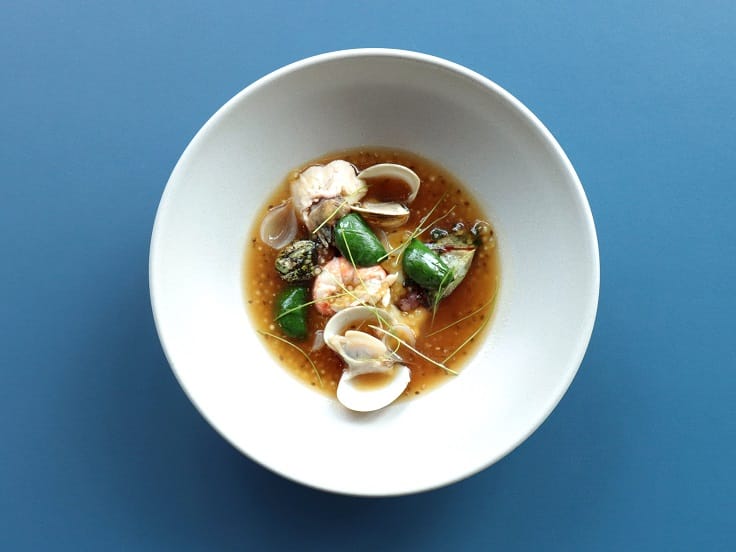
At RAW, the dish Bitter Melon, Salted Duck Egg, Grains is a reinterpretation of a staple Taiwanese dish: salted duck egg and bitter melon congee. The Cuiyu bitter gourd and bitter melon are arranged neatly to cover the “risotto” made of various types of grains, accompanied by mashed salted duck egg yolk.
“I often ate vegetables with a bitter taste when I lived abroad. But in the past (in Taiwan), there were few ways to prepare them, so this time we took on the task,” said Alain Huang, chef of RAW.
Another dish on the menu, Shellfish, Oxtail Soup, Chia Seed, puts the gooseneck barnacles from Penghu and the west coast in the Chinese angelica and oxtail soup. Kimchi, Winter Melon, Kale has smoked white trevally fish wrapped inside roasted kale, with powdered kimchi sprinkled on top. The winter melon on the side is cooked to mimic white asparagus.
“Every restaurant promotes white asparagus this season. But when cooked properly, the texture of winter melon is very similar to white asparagus,” Wong added.
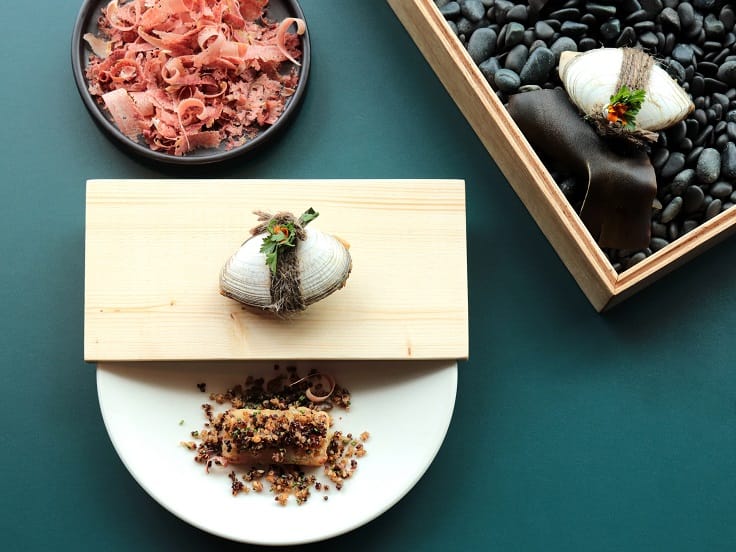
RAW’s summer menu is a celebration of the ingredients from the Penghu region in Taiwan. In addition to gooseneck barnacles and Japanese horse mackerel, it highlights the native dish of rice stuffed in clams, in which stir-fried glutinous rice is stuffed inside large clams, fastened with cotton strings and steamed.
Chef-owner of RAW André Chiang hopes that the cuisine at RAW will remain unbounded by convention. In conceptualising future dishes, it should review the use of Taiwanese ingredients based on three principles: the first is common but lowly regarded produce, like bitter melon; the second is to use Taiwanese ingredients that had not been featured in French cooking, such as winter melon; and finally the third, conserving traditional dishes, like rice stuffed in clams. The restaurant needs to continue its deconstruction and expression of Taiwanese flavours, going deeper every time.

In order to develop his menu, Huang went on a field trip to Penghu in mid-April. From 8am to 8pm, he traversed the islands, beginning with the Beichen Market and Penghu Yu Market, and then proceeding east to the "Moses Parts the Sea" in Kuibishan Geopark to the township of Baisha, where he visited the Tongliang Great Banyan and the villages of Chengqian and Jiangmei, famed for producing oysters and seaweed. Over in Xiyu Township, he closed out his day’s journey at Ching Shin Seafood and a local cultural museum.
Like pearls scattered along the Taiwanese strait, Penghu is an archipelago made up of 90 islands with a history that goes all the way back to the Yuan dynasty. These days, it is a tourist attraction beloved for the fireworks and all kinds of summer marine activities. Geographically, Penghu boasts some awe-inspiring sights such as the basalt formations and a complex ecological system.
Scarce rainfall, proximity to the sea, thin layers of soil and strong seasonal winds during winter are all the natural conditions beneficial for the plants grown in Penghu, most of them resistant to salinity and dryness. Few visitors would pass up the opportunity to sample local specialities like peanut, cactus and sponge gourd. As for marine life, the tributary of the Kuroshio Current brings a multitude of sea-dwelling species to the islands.
We sat down with Huang for a conversation about his trip to Penghu. Through the eyes of a chef, we learnt about how food inspires the life of the locals.
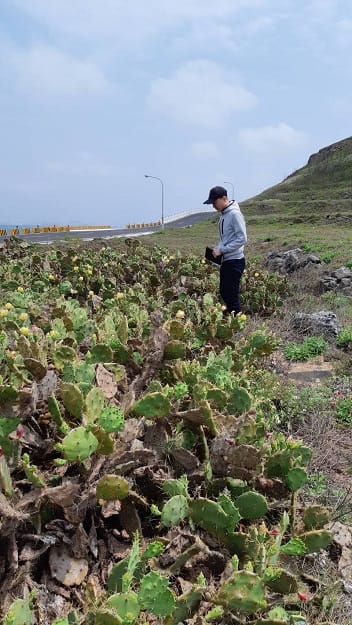
Why did you decide to go to Penghu? How important are site visits when you are conceptualising a new menu?
It made me curious when I heard chef André Chiang talk about the rice stuffed in clams from Penghu. Since I didn’t know about it, I went there to understand how it tastes like, what ingredients are used. You discover different things when you arrive.
Site visits are very important, because it makes you discover the ingredients and culinary culture. For example, what natural conditions are helpful to production and other related considerations. You’d also learn the details, like the steps of making the stuffed rice, what kind of rice they use. If possible, I’d arrange site visits. Looking at the way the ingredients are produced and cooked locally gives me new thoughts and sparks of creativity.
How many times have you been to Penghu? What was your first impression?
I went there when I was a child. But for work, it was the first time. Penghu feels like those tropical countries or the ones in Central and South America. You can feel the salty sea winds from the coast, and there are lots of cacti and sea spinach.

Where in Penghu did you visit this time? What are the takeaways?
I know some friends from Penghu, so this time I asked them to show me the local markets and restaurants. I departed at 8am and got on the return flight at 8pm. They took me to the market and harbour to find local seafood. And we went to the oldest restaurant of the islands, Ching Shin Seafood. One of the dishes there is marinated oysters. It’s mixed with wasabi and you eat it with a spoon (pictured on the right). It immediately reminded me of ceviche from South America.
We also had deep-fried red mullet and we cleaned up all the scales and the head. All the seafood is freshly caught. In addition, I saw the crowned turban shell. The locals would pick the meat out with their hands and eat it like a snack or make a paste with it. Prawns are very common there as well.
Walking along the coastline, cactus is everywhere. We got some cactus fruit to try. There is also a lot of sea spinach. It looks and tastes like real spinach, except that it’s thicker. And we got to see the wild gooseneck barnacles and try the oysters of Penghu. The salinity of the sea water there makes the oysters taste stronger.

What are the most interesting discoveries of your journey?
In my opinion, there are similarities between many Taiwanese and foreign ingredients. These could be the result of being on the same latitude and climate. But because they are produced in Taiwan, they might take on a different expression. For example, sea spinach, also known as French spinach, is very close to regular spinach, just that its leaves are slightly thicker. Moreover, the rock oysters are served in a way very similar to South American ceviche.
Since the same latitude and climate produce similar ingredients, it means certain foreign produce could have corresponding counterparts around us which we had never realised. We should dig deeper and rethink along the lines of climatic conditions and origins. There are things that are seen as food elsewhere but not in Taiwan, or vice versa. It’s an interesting conceptual exercise.
What is the one thing that you would always do whenever you are in a new location?
I would always pay a visit to the local market and then the special restaurants there.
This story is written by Hsieh Ming-Ling and translated by Vincent Leung. Click here to read the original article.
All pictures courtesy of RAW.







